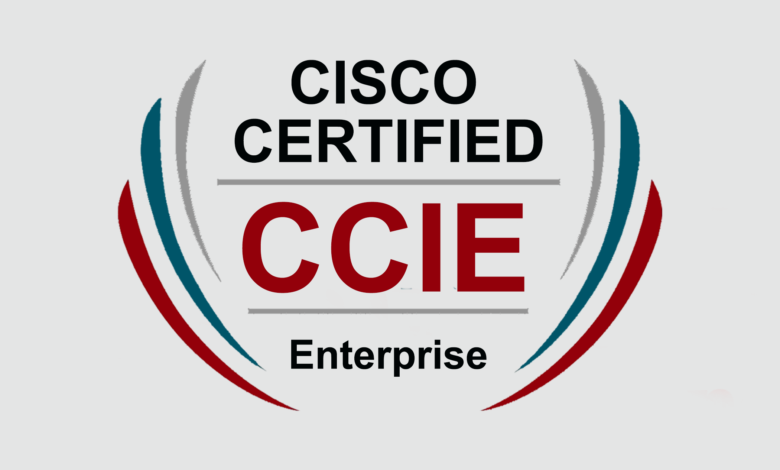What is CCIE enterprise infrastructure?

Are you familiar with ccie enterprise infrastructure? If not, this is the perfect time to learn more about it! In today’s digital age, businesses require a robust and reliable network infrastructure to keep up with ever-evolving technology. CCIE enterprise infrastructure provides just that – a comprehensive solution for designing, implementing, and managing large-scale networks. Join us as we explore what exactly CCIE enterprise infrastructure is, its benefits and challenges, and how it can be implemented in your business. Let’s dive in!
What is CCIE enterprise infrastructure?
CCIE enterprise infrastructure is a certification program that verifies expert-level skills in designing, deploying, and managing complex network infrastructures. It provides a comprehensive solution for businesses to design and implement large-scale networks that are reliable, secure, and high-performing.
The CCIE enterprise infrastructure certification program covers various networking technologies such as wireless LANs (WLAN), virtual private networks (VPN), routing protocols, and more. With this knowledge, certified professionals can help organizations deploy new technology effectively while ensuring stability across their systems.
Furthermore, with CCIE enterprise infrastructure expertise on board, companies can improve the overall performance of their network by optimizing bandwidth usage through load balancing and traffic management techniques.
In summary, obtaining the CCIE enterprise infrastructure certification showcases advanced-level knowledge of network planning and implementation. It demonstrates an individual’s ability to bring value to any organization by creating efficient solutions tailored specifically to business needs.
The different types of enterprise infrastructure
Enterprise infrastructure is a crucial aspect of any large-scale organization. There are several types of enterprise infrastructure, and each one serves a specific purpose.
Firstly, there’s the network infrastructure that deals with the connectivity between different devices and networks within an organization. This includes routers, switches, firewalls, and load balancers.
Secondly, there’s the storage infrastructure that manages all the data in an organization. It includes servers for storing data on-premises or in the cloud-based storage systems like AWS S3 or Microsoft Azure Storage.
Thirdly, there’s computing infrastructure that comprises servers to manage applications running on them. Computing infrastructures include physical servers as well as virtual machines.
Finally yet importantly there are security infrastructures which deal with protecting sensitive information from internal threats such as hacking or external cyber attacks by using different technologies like encryption protocols and intrusion detection systems.
It is important to have a clear understanding of these types of enterprise infrastructures to ensure optimal performance for your business processes along with ensuring cybersecurity measures are up-to-date at all times.
The benefits of enterprise infrastructure
Enterprise infrastructure offers a wide variety of benefits that can help businesses operate more efficiently and effectively. One key advantage is improved communication and collaboration between employees, which can lead to increased productivity levels.
Another benefit of enterprise infrastructure is enhanced security measures. With the rise in cyber-attacks, businesses need to ensure their data and information are protected from potential threats. Enterprise infrastructure provides various security protocols like firewalls, encryption methods, user authentication mechanisms and intrusion detection systems that prevent unauthorized access to sensitive information.
In addition, enterprise infrastructure ensures high availability with minimum downtime. This means that business processes will not be interrupted due to server failures or network issues. As a result, customers will have seamless experiences when interacting with the business through its various channels such as social media platforms or e-commerce sites.
Furthermore, enterprise infrastructure allows for scalability options without sacrificing performance levels. Businesses can expand their IT capabilities without worrying about bandwidth restrictions or system limitations thanks to technologies like cloud computing services which provide on-demand resources at affordable prices.
Implementing an effective enterprise infrastructure strategy has many benefits for modern businesses looking to improve their operations while remaining competitive in today’s market.
The challenges of enterprise infrastructure
One of the biggest challenges faced by enterprises when implementing infrastructure is cost. Building and maintaining an enterprise-grade infrastructure can be expensive, requiring significant investments in hardware, software and personnel.
Another challenge is complexity. Enterprises often have large and complex networks that require a high level of expertise to configure and manage effectively. This can result in longer deployment times, increased troubleshooting efforts, and general frustration for IT teams.
Security also poses a significant challenge for enterprise infrastructures. With increasing cyber threats targeting businesses of all sizes, it’s crucial to ensure that network security measures are up-to-date, comprehensive and effective.
Scalability is another issue when it comes to enterprise infrastructure. As businesses grow or expand into new markets, their infrastructure needs may change dramatically. Scaling up existing systems or adding new ones can be difficult without proper planning and coordination between different departments within the organization.
Legacy systems pose a unique challenge for many enterprises as they struggle with integrating newer technologies with their older infrastructure. Overcoming this hurdle requires careful planning and execution to ensure compatibility between different systems while minimizing disruption to ongoing operations.
How to implement enterprise infrastructure
Implementing enterprise infrastructure can seem like a daunting task, but with the right approach and resources, it can be done effectively. The first step is to define your goals and objectives for implementing enterprise infrastructure. This will help you create a roadmap that outlines specific tasks and timelines.
Next, you need to assess your current IT environment to identify any gaps or areas of improvement. This involves evaluating your hardware, software, network architecture, security protocols and data management policies. You may also want to consider bringing in external consultants who specialize in enterprise infrastructure implementation.
Once you have identified the gaps and areas for improvement in your IT environment, it’s time to develop an implementation plan. This should include identifying the necessary resources needed (e.g., personnel, budget), prioritizing initiatives based on business needs and creating a timeline for execution.
It’s essential that throughout the implementation process you communicate regularly with stakeholders across all levels of the organization. Clear communication ensures everyone is aligned on expectations and progress updates are shared regularly.
As with any major initiative or project within an organization – continuous monitoring is critical post-implementation to ensure everything remains operational while addressing new challenges within the system over time.
Conclusion
CCIE Enterprise Infrastructure is a certification that demonstrates expertise in enterprise infrastructure solutions. It covers various topics such as network design, automation, security, and more.
Implementing an effective enterprise infrastructure can provide numerous benefits to organizations. It can increase efficiency, productivity, and ultimately lead to better customer experiences.
However, it’s important to acknowledge the challenges that come with implementing complex infrastructures. These include cost considerations and potential skill gaps among IT staff.
Pursuing CCIE Enterprise Infrastructure can help professionals develop advanced skills in designing and managing complex networks for large-scale enterprises. As technology continues to evolve rapidly across industries today, keeping up-to-date with new developments is critical for staying competitive in the job market check my ccie exam service site.



